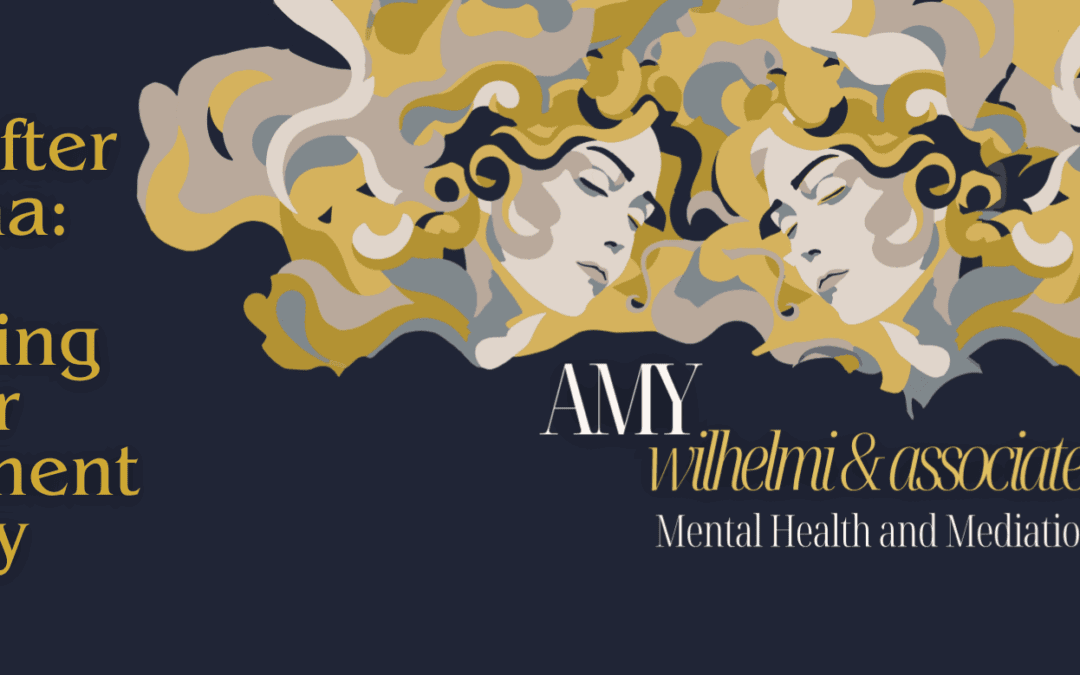How Emotionally Focused Therapy (EFT) Heals Deep Relational Wounds
By Amy Wilhelmi, LMFT
Have you ever sat across from someone you love, wanting so badly to feel close—but ending up in the same painful argument over and over again? Maybe you shut down. Maybe you get loud. Maybe your body goes into panic or freeze before you even know what’s happening.
You might be thinking:
“Why does love feel so hard?”
“Am I just too much—or not enough?”
If these questions feel familiar, you’re not alone. Many people carry invisible injuries into adult relationships. These are attachment wounds, often rooted in early trauma or inconsistent caregiving. Fortunately, Emotionally Focused Therapy (EFT)—a powerful, trauma-informed approach to couples therapy—can help you break the cycle and reconnect with the people you love most.
What Is Emotionally Focused Therapy (EFT)?
Emotionally Focused Therapy (EFT) is a research-supported model developed by Dr. Sue Johnson. Based in Attachment Theory, EFT helps individuals and couples move from conflict and disconnection into emotional intimacy and security (Johnson, 2004).
Unlike traditional talk therapy that focuses on logic or advice-giving, EFT gets underneath the surface issues to address the real problem: emotional safety.
When we don’t feel emotionally safe, our nervous systems default to protection—not connection. EFT works by helping couples slow down, feel their feelings, and respond to each other in new, more vulnerable ways.
How Attachment Wounds Show Up in Relationships
Many clients who come to couples therapy for trauma are stuck in cycles of reactivity. These patterns often trace back to attachment styles developed in childhood (Bowlby, 1982):
-
Avoidant Attachment: withdrawing, shutting down, appearing “cold”
-
Anxious Attachment: clinging, over-functioning, fearing abandonment
-
Disorganized Attachment: swinging between clingy and distant
These aren’t “bad behaviors”—they are trauma-informed adaptations. The problem is, they make intimacy feel dangerous even when it’s what we most desire.
EFT helps clients recognize these patterns not as personal flaws, but as outdated survival strategies—and then guides them to rewrite the emotional script.
Why EFT + Trauma Therapy Is a Game-Changer
In my clinical practice, I often combine EFT with Ketamine-Assisted Psychotherapy (KAP). KAP softens emotional defenses and brings buried insights to the surface. EFT then provides a structure for integrating those insights in real time, especially within intimate relationships.
Let’s say a client realizes during KAP that they fear abandonment. EFT helps them say,
“When you pull away, I panic. I feel unlovable.”
And it helps their partner respond with empathy instead of defensiveness.
That’s the magic: KAP opens the emotional door; EFT helps you walk through it—together.
What to Expect in an EFT Therapy Session
EFT is a structured, experiential therapy. Here’s a snapshot of what a session might look like:
-
Identify the cycle: “When he shuts down, she gets louder. Then he retreats further.”
-
Name the emotion: “Underneath the anger, there’s fear of rejection.”
-
Practice new responses: “Can you tell her what you really need instead of pushing away?”
The therapist doesn’t act as a referee but as a process guide, helping partners find the courage to express softer feelings and create new ways of connecting.
Over time, these new interactions build secure attachment—the emotional safety net we all need for love to thrive.
Love Isn’t Broken—It’s Wounded. And Wounds Can Heal.
Attachment trauma tells us that love isn’t safe. That we must earn affection, hide our feelings, or always be on guard. But with the right tools and therapeutic support, we can unlearn these patterns.
Emotionally Focused Therapy for trauma and attachment wounds teaches us that vulnerability can be met with compassion, and that true connection begins when we stop performing and start revealing.
You are not too much.
You are not broken.
You’re just protecting old wounds. And you’re allowed to heal.
Coming Next: Trauma in the Body
In our next post, we’ll explore how trauma lives in the nervous system—and how EMDR (Eye Movement Desensitization and Reprocessing) helps clients reprocess painful memories that words alone can’t touch.
Learn More or Book a Session
If you’re curious about EFT therapy, trauma-informed couples work, or how KAP can support emotional healing, visit my Ketamine-Assisted Therapy page or Contact Me.
Let’s Talk
What’s one emotional pattern you’ve seen in your relationships that might be tied to early experiences?
Share below or message me privately—your story matters.
Selected References
-
Bowlby, J. (1982). Attachment and Loss.
-
Johnson, S. (2004). The Practice of Emotionally Focused Couple Therapy.
-
Mikulincer, M., & Shaver, P. (2016). Attachment in Adulthood.
-
Greenman, P., & Johnson, S. (2013). Process research in emotionally focused therapy.
